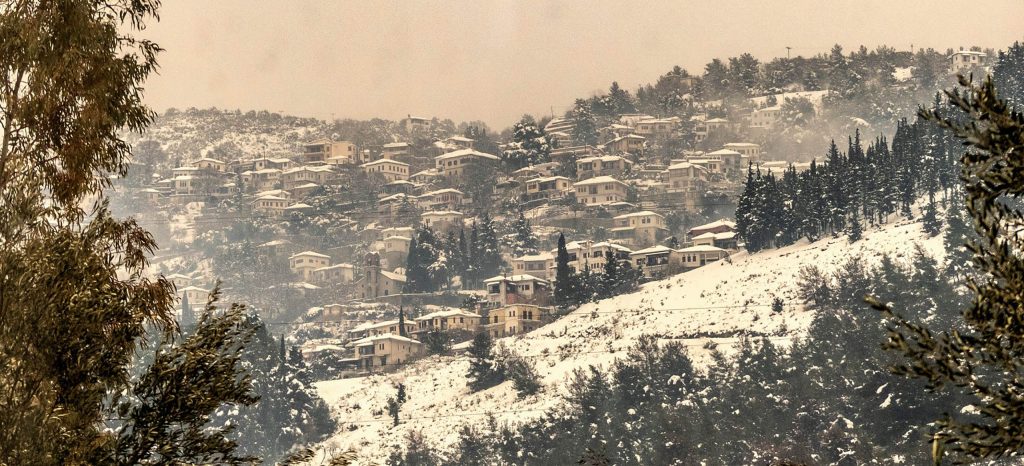
It is built on the western slopes of Pelion, north of Volos, on a green slope with abundant running waters and panoramic views to the Pagasetic Gulf and the surrounding villages. They have occasionally given it several characterizations such as “the lady of Pelion” and “the lady on the reception”, since it is the first village towards the top of Pelion and thus, it undertakes to “welcome” the travelers.
The original settlement was created during the Slavic settlements in Greece, whose name was Dryanouvaina. At the end of the Byzantine period, many monasteries were founded in the area, one of which was the monastery of Panagia Portarea, around which the settlement was originally set up. In fact, the village took its name after this 13th-century monastery.
The village of Makrinitsa is a pure jewel hanging on the edge of the amazingly lush and green mountain. Makrinitsa is known as the “Balcony of Pelion”, due to its unique view over Volos and the Pagasetic Gulf that can be seen from every point.
Makrinitsa is also known as the “noble village”, as it was mostly inhabited by wealthy people. Its admirable mansions dated from the 18th and 19th century indicate the village’s history and most of these are now being renovated and used as hostels that offer an “ambient” stay to their visitors.
Volos is a modern city with a special charm and its own particular colour, marked largely by its place between the sea of the Pagasetic Gulf and the imposing Pelion Mountain.
The Argo is the symbol of the city. The mythical ship became known around the world through the myth of the expedition of Jason and the Argonauts to Colchis. A few kilometres west of the city are the archaeological sites of Sesklo (the settlement dates back to 6000 BC and is the oldest in Europe) and Dimini (the best-known prehistoric settlement in Greece and most important of the late Neolithic period).